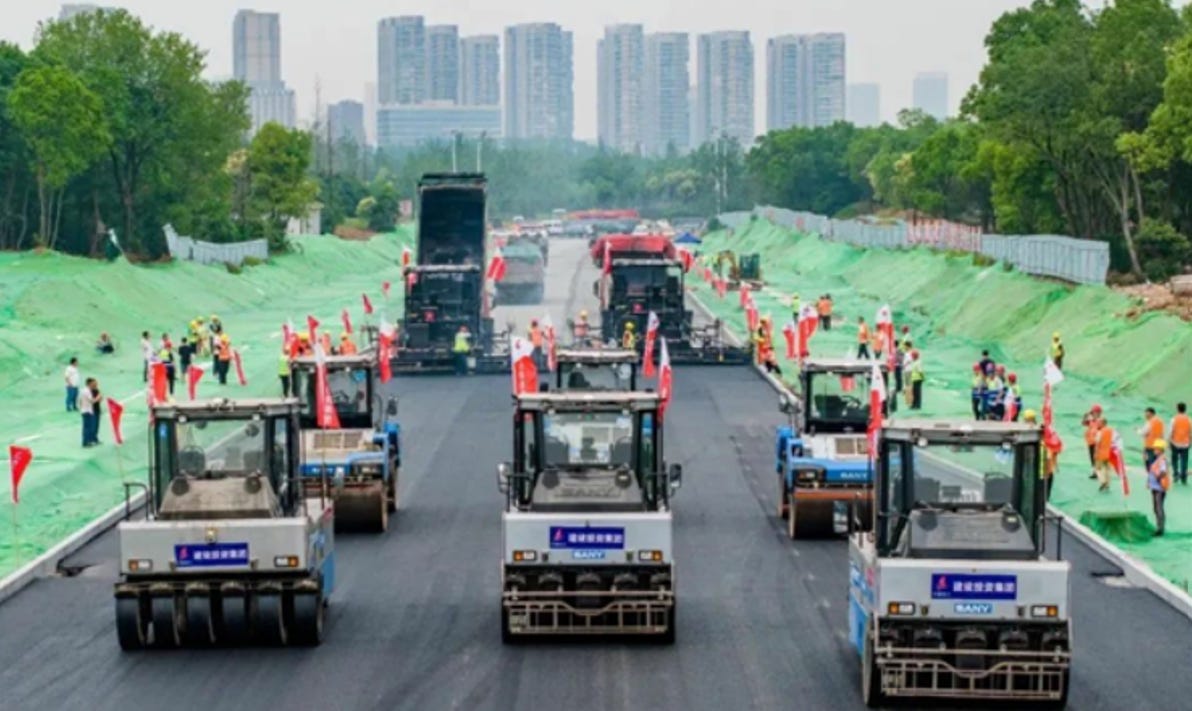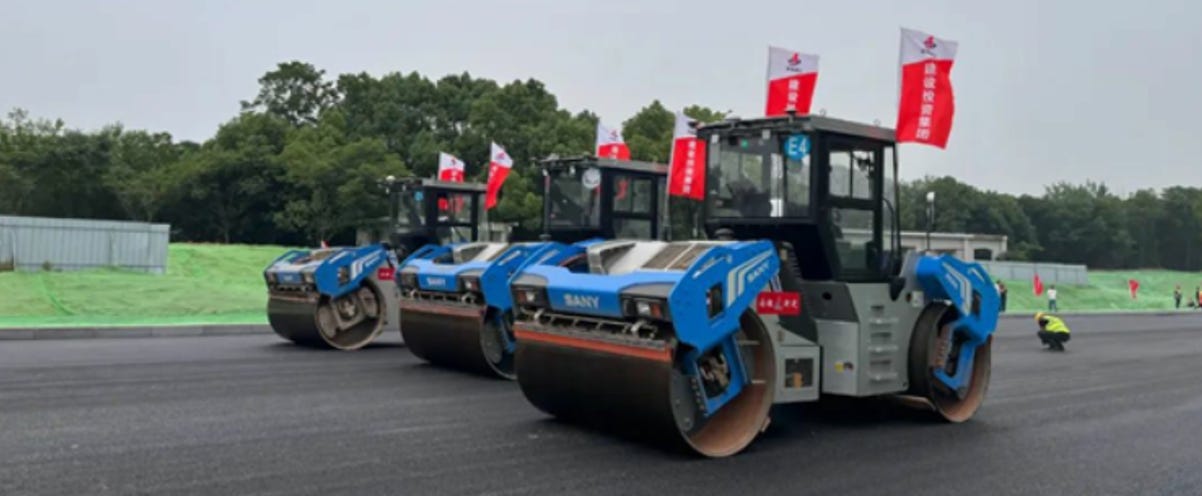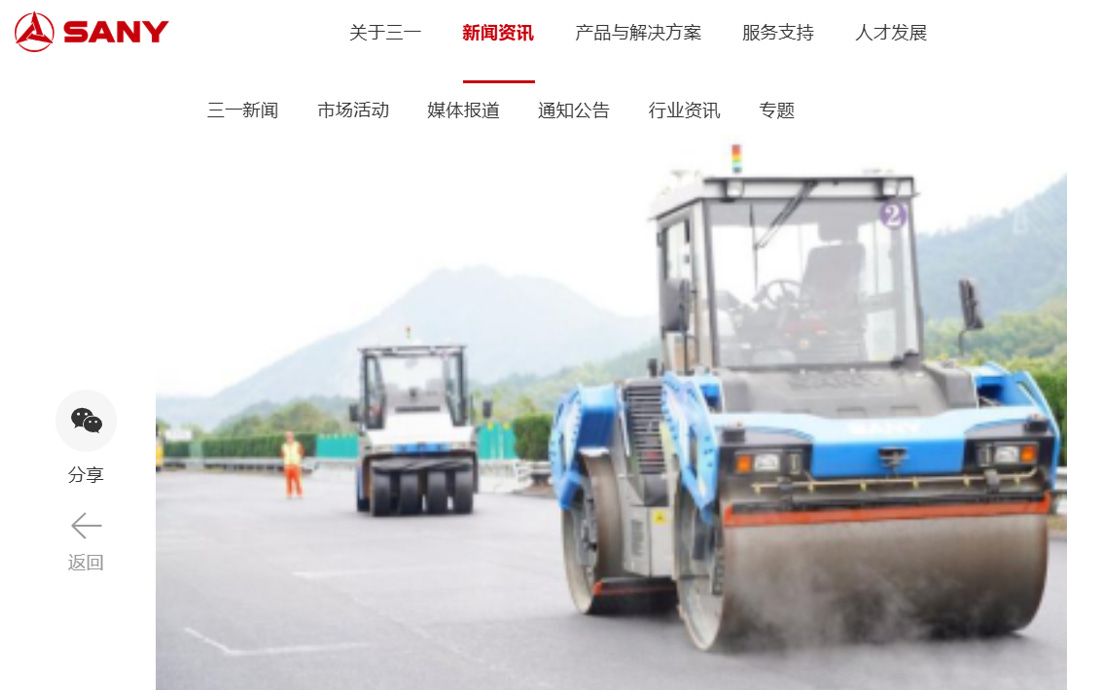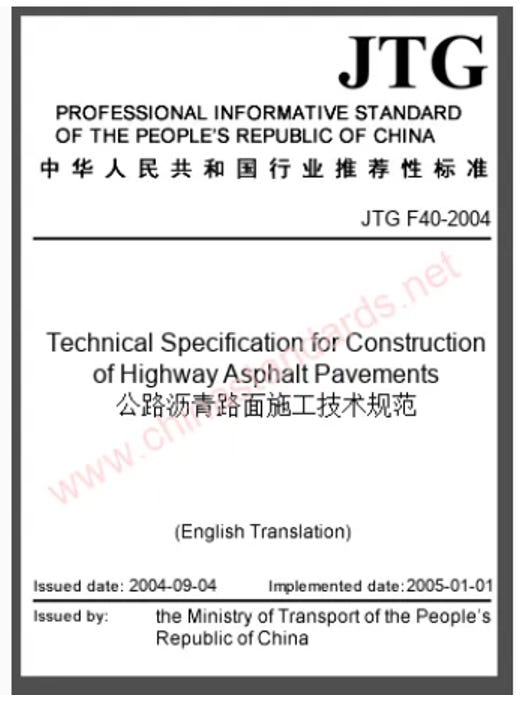China’s Autonomous Highway: 158 km Without Human Hands
“The rebellion of the machines in a sector that once seemed untouchable”
In 2024, on the Beijing–Hong Kong–Macau Expressway in Henan province, China completed the world’s first fully unmanned highway paving project: 157.8 kilometers of four-lane roadway built with zero operators on site. No crews pouring asphalt under the sun. Instead, drones, satellites, algorithms, and autonomous heavy equipment worked in perfect sync to deliver a project that has redefined civil engineering.
The process began with drones surveying the terrain and generating digital models accurate to the centimeter. These were integrated into geospatial and BIM-style platforms, aligning every layer before the first load of asphalt was laid. What normally takes weeks of manual surveying was reduced to days, with fewer errors.
The fleet—supplied by Sany Heavy Industry—included a 20-meter-wide SAP200C-10 autonomous paver, six 13-ton double-drum rollers, and three 30-ton pneumatic rollers. Deployed in formation (1 + 3 + 3 + 3), the machines worked like a platoon, guided by Beidou GNSS, LIDAR, and inertial navigation systems. The result: a seamless asphalt mat, free of cold joints, laid with millimetric precision.
What tied it all together was software. AI algorithms controlled alignment, pace, and compaction cycles. Edge computing enabled real-time decisions, while safety systems enforced geofencing, obstacle detection, and emergency stops. In essence, the software acted as the project manager, transforming the engineer’s role from directing crews to supervising systems.
The numbers speak for themselves: a 66% reduction in labor requirements, 50% more efficient compaction per pass, and a surface uniformity beyond conventional tolerances. Economically, the project reduced costs by cutting manpower and idle time; environmentally, it lowered emissions through optimized cycles and minimal rework.
Materials followed the Chinese JTG F40-2004 hot-mix asphalt standard, likely with dense gradation and polymer-modified bitumen to guarantee stability and durability—essential for a fully automated process. Oversight was provided by the Henan Provincial Infrastructure Bureau and the China Transport Construction Research Institute, ensuring compliance with national standards
.This was no pilot. It was a state-backed deployment at full scale. And it signals more than a technological milestone: it shows that automation in infrastructure is no longer experimental—it is already buildable at scale.
For civil engineers, the message is clear. Our future lies not in managing operators, but in integrating data, validating algorithms, and ensuring design intent is carried out by fleets of autonomous machines. The highway in Henan is more than asphalt—it’s a warning shot to the global industry.
The only question is: will we lead this transition, or wait until the machines force us to adapt?





